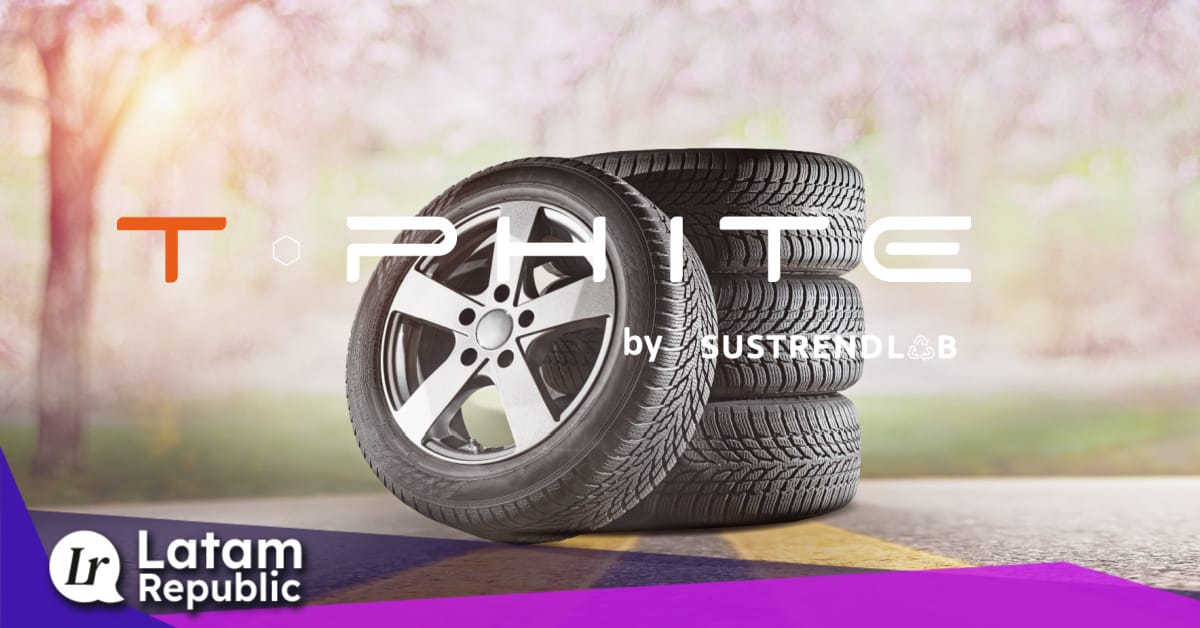T-Phite: Transforming Scrap Tires into Electric Car Batteries

Discarded tires, often destined for landfills, might find an unexpected future as crucial components for electric car batteries. T-Phite, a Chilean startup, has developed a groundbreaking solution to recycle tires and convert them into batteries, addressing the environmental challenges associated with conventional battery manufacturing.
The Environmental Challenges of Electric Car Batteries
Despite the environmental advantages of electric cars, the production of their batteries presents significant environmental challenges. The extraction of lithium, an essential component in these batteries, has negative consequences for the environment, including high water and energy consumption. Additionally, lithium batteries contain harmful chemicals such as cobalt and manganese, contributing to environmental pollution.
Chilean startup has proposed an innovative solution to tackle these challenges. Their approach involves the transformation of used tires through a technique called pyrolysis. This process subjects tires to high temperatures, breaking them down and separating usable components from non-usable ones.
T-Phite's pyrolysis method breaks down tires into three byproducts: pyrolysis oil, steel, and carbon black (or soot). The latter, rich in graphite, becomes the crucial element for T-Phite's sustainable batteries. The technology not only reduces dependence on natural resources but also addresses the problem of tire accumulation in landfills.
Perhaps you might also be interested in reading: CMI Energy advances in the issuance of renewable energy certificates
Graphite from Tires: A Sustainable Alternative for Batteries
The composition of tires includes carbon black, derived from petroleum, used to strengthen the rubber and give it its characteristic black color. In the pyrolysis process, this carbon black transforms into hard carbon graphite, essential for electrical conductivity and fundamental in T-Phite's battery manufacturing.
The company has validated the effectiveness of this graphite in button cells and in batteries used by manufacturers like Tesla.
T-Phite's proposal reflects its commitment to promoting more ecological and sustainable battery technologies. By using graphite derived from tire soot, the startup not only aims to solve the tire recycling problem but also reduce the environmental impact associated with electric vehicle battery production.
T-Phite: Leading Sustainable Battery Solutions
T-Phite has emerged as a leading force in sustainable battery solutions. Originating from SustrendLab, the scientific innovation laboratory of the Dosandar Group, the company focuses on merging innovation and sustainability. Their pioneering technology utilizes black carbon from end-of-life tires to produce hard carbon graphite, contributing to a circular economy and minimizing the need for natural resource extraction.
T-Phite's vision is set on becoming a global leader in sustainable battery solutions. Through continuous innovation, strategic partnerships, and a commitment to environmental responsibility, the company aims to optimize processes, expand product offerings, and deliver high-quality hard carbon graphite for batteries. Additionally, the company plans to collaborate with industry leaders and research institutions, generating positive social impact and exploring new possibilities in battery sustainability.

Sustainability Commitment at T-Phite: Beyond Production
T-Phite not only commits to sustainability in its production methods, but also continually invests in research and development. They seek to optimize energy efficiency and explore new materials to enhance battery performance while minimizing environmental impact. By choosing T-Phite, customers can confidently embrace sustainable battery solutions, knowing that the technology significantly reduces carbon emissions and contributes to a more sustainable and responsible future.
This initiative demonstrates that innovation can play a crucial role in solving environmental problems, transforming waste into valuable resources for the transition to a more sustainable future
